The string of hearts is a favorite plant among those who love the trailing vines. This plant has beautiful heart shaped leaves, is a fast grower, and comes in a variety of stunning color variations.
Ceropegia Woodii is also known as the Rosary vine and Sweetheart vine. This trailing succulent can tolerate going longer between waterings.
The plant is drought resistant due to its large thick leaves that retain water. The tubers that grow with the root base can also store water for the plant.
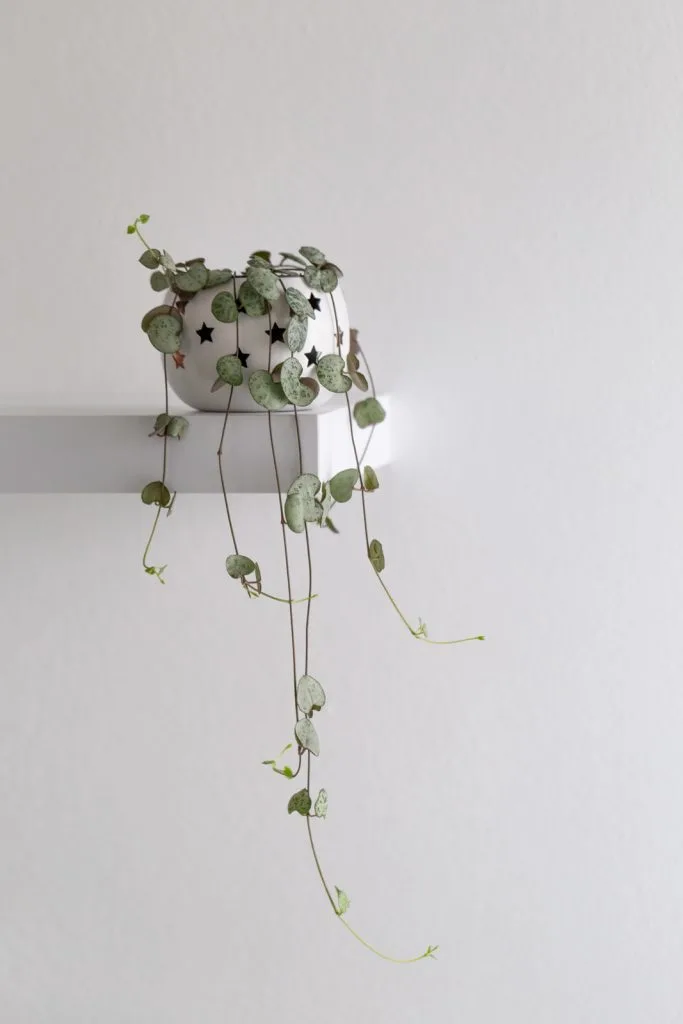
The can grow up to 13 feet long in its natural habitat. The plant is a fast grower when given the correct growing conditions and plenty of bright indirect sunlight.
The Ceropegia Woodii is easy to propagate. Learn how to propagate a string of heart in this post.
The Contented Plant
The plant responds well to being pruned back and will often split into two vines when one is cut to propagate. Because this plant is a fast grower, it propagates very quickly and relatively simply.
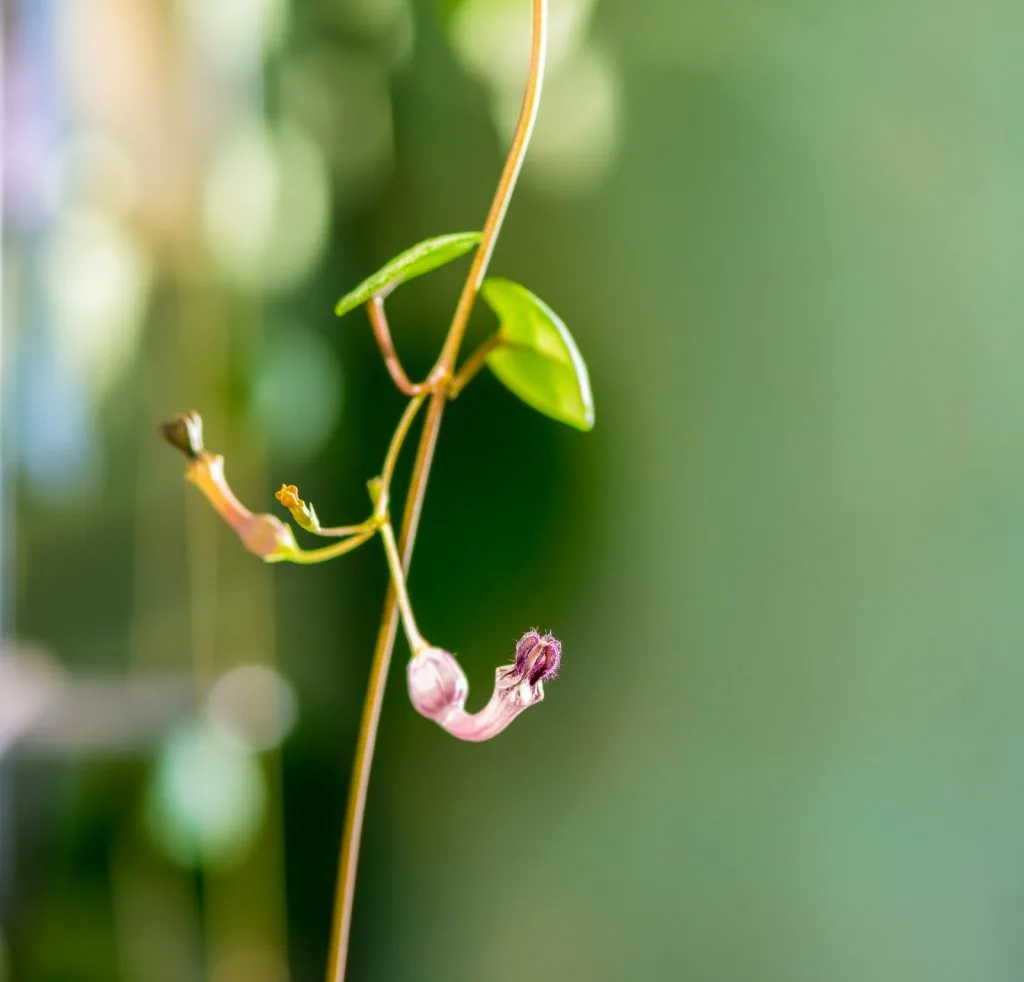
With the right conditions this plant will even produce beautiful blooms during the summer and fall growing season.
Other Drought Resistant Plants:
If you Love the string of hearts, you will also enjoy the String Of Turtles Vine. Very cute! And take a look at these pretty succulents too.
The Hoya Bella is also a flowering vine. Unlike the String go hearts the Bella has large clusters of tiny star shaped flowers. Very pretty!
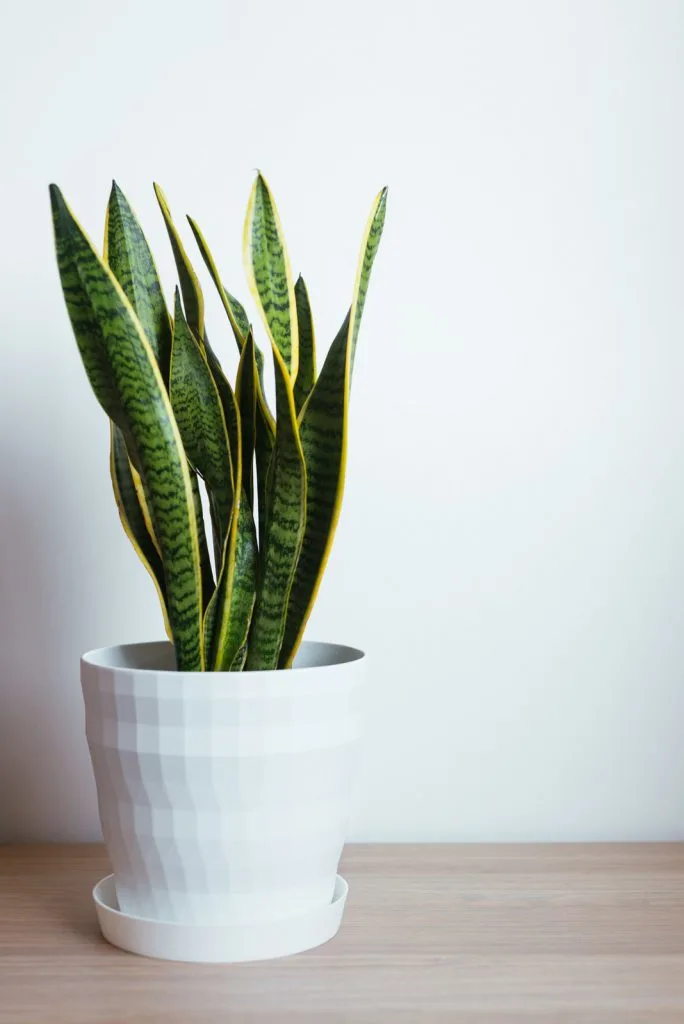
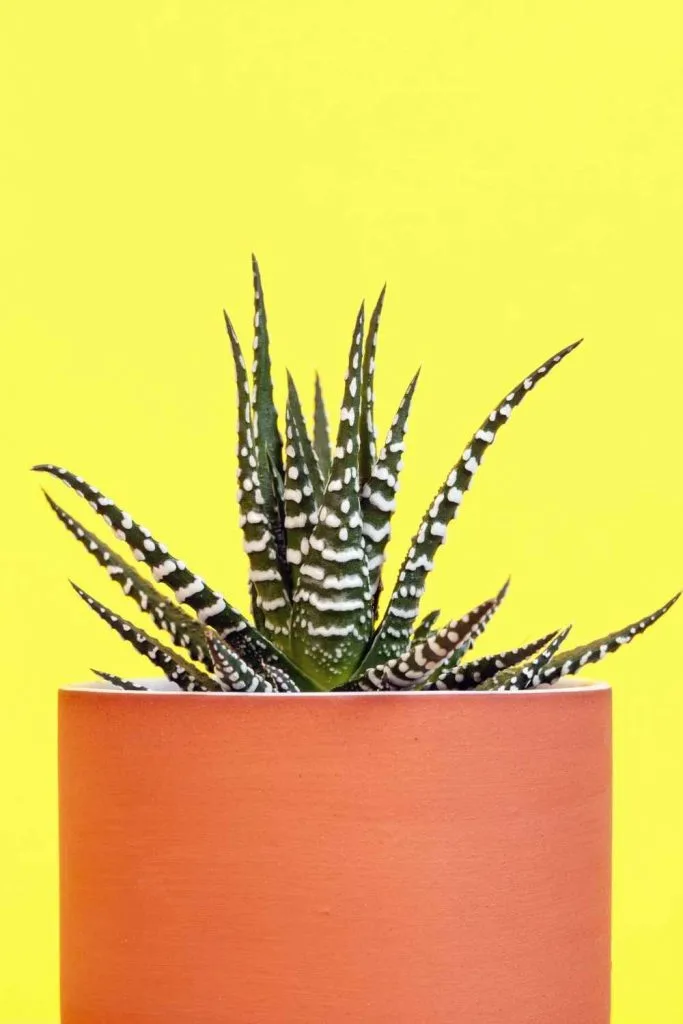
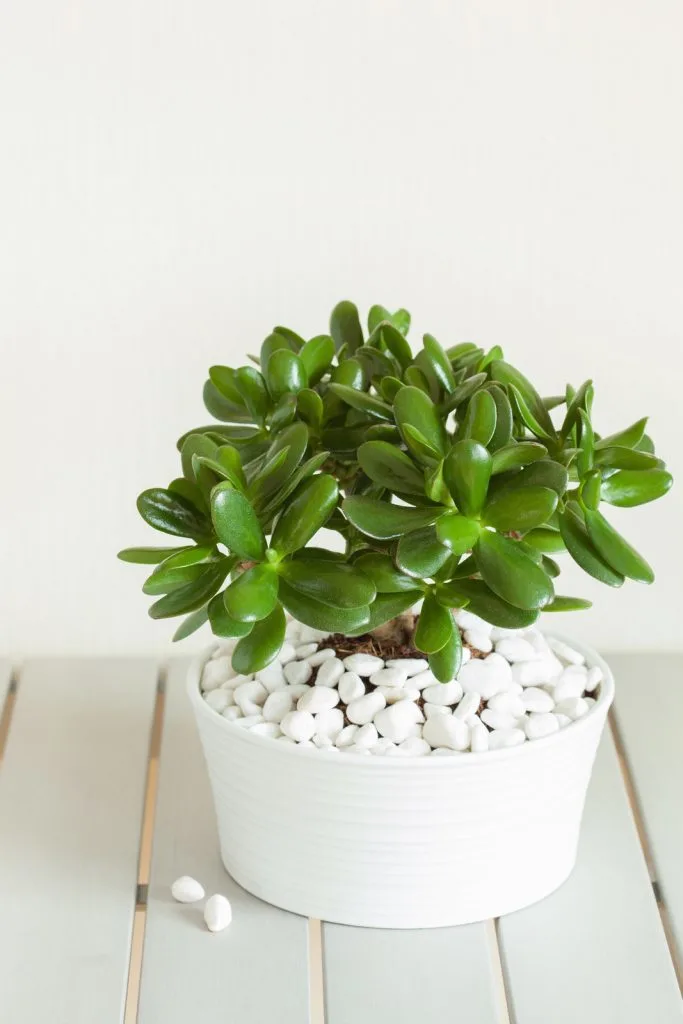
The most common cause of this plant dying is from overwatering. Avoid overwatering by making sure the soil is completely dry at least an inch down.
If your String of hearts begins to yellow or drop leaves ….
Read 7 Reasons Your Plant has Yellowing Leaves
The Contented Plant
You can also do a leaf test by touching the leaves near the base of the plant. They should feel thick and firm. If they are soft and wrinkly, your plant needs a good watering.
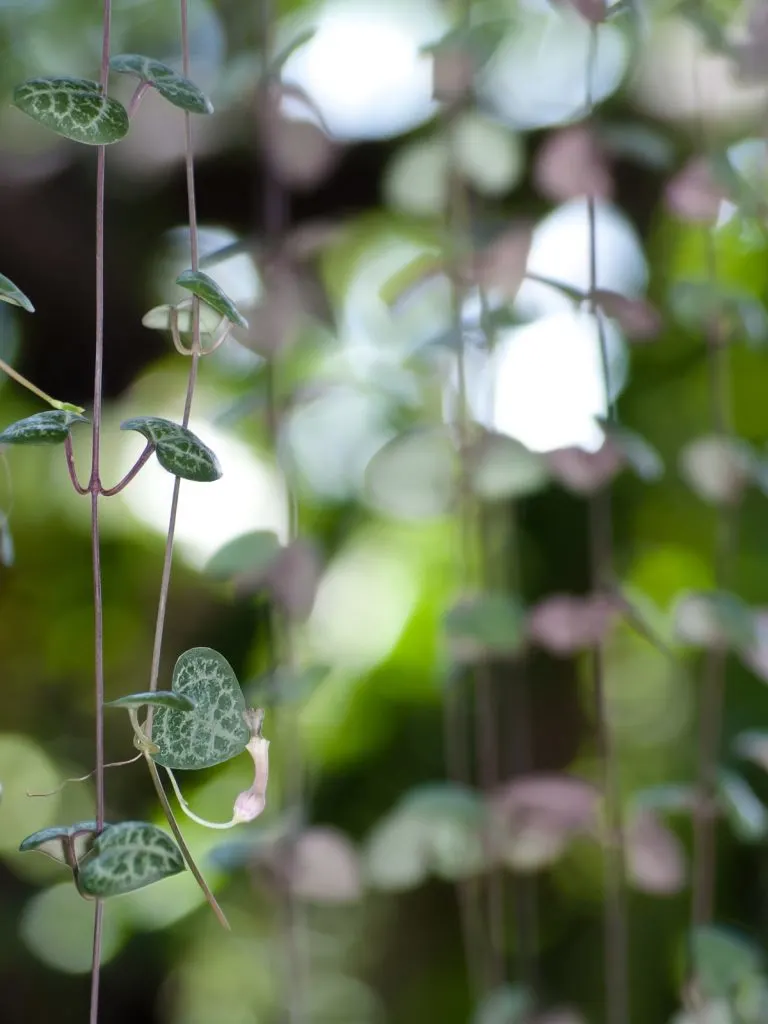
Non Toxic Plant:
Ceropegia Woodii plants are all non toxic to humans and pets. But beware those long enticing trailing vines. It’s very easy for a child or pets to pull this plant off a high shelf.
These vines are pretty tough and will probably survive if you repot them. However, you don’t want to clonk your pet or child on the head or have a messy dirt and broken pot disaster.
So keep the strings out of reach.
Read about the Variegated String of hearts.
The Contented Plant
Printable String of Hearts Care Guide:
To help with the care of this gorgeous NonToxic houseplant, we have created a printable care guide.
String of Hearts Care Guide
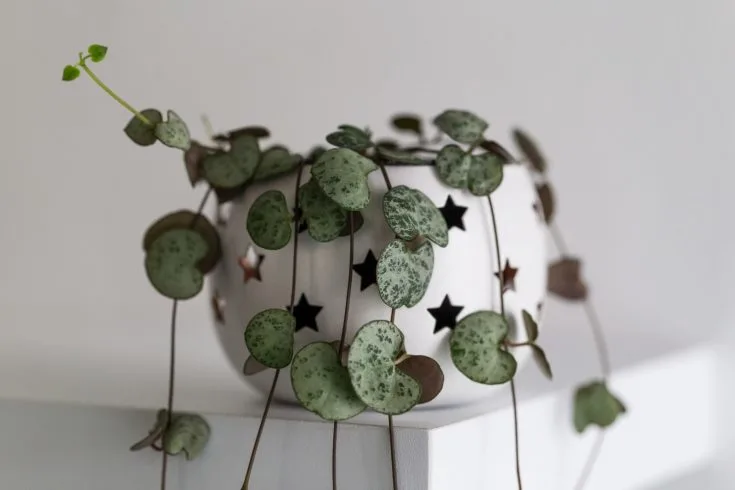
Ceropegia Woodii plant is commonly known as the String of Hearts or Sweetheart vine.
This plant has heart shaped green leaves, that hang down and grow in a long vining structure. The String of Hearts is often considered a fast growing succulent plant.
This Care Guide will teach you how to keep this houseplant happy all through the year.
Materials
Tools
- Pot (ceramic, plastic, or terra cotta)
- Potting medium (perlite, and soil)
- Scissors
- Rubbing Alcohol
Instructions
Soil Preference:
- String of Hearts prefer well draining soil. The roots will rot quickly if they sit in moist soil.
- A mix of cactus potting mix and perlite will keep the roots happiest.
- Make sure your pot has drainage at the bottom. Do not use a pot with no drainage hole for this plant.
- A heavy soil potting mix is not recommended for String of Heart plants.
Pot Size and Type:
- The String of Hearts plant can grow in many different kinds of pots, I like to plant mine in ceramic pots with a drainage hole.
- Repot every second year or when roots come out the drainage holes on the pot bottom To the next pot size up. Don't jump to a huge pot from a small one. Just go to the next size up pot.
Lighting:
- The String of Hearts will grow best in bright indirect light.
- This plant will do best in a West or South facing window.
- Make sure the String of Hearts plant isn't sitting in constant direct sunlight, the leaves can get burnt.
Watering:
- Water your String of hearts plant when the soil is dry at least an inch down. These plants are typically drough resistant and can withstand longer periods of dryness compared to other houseplants.
- A good test to tell if it needs watering is the leaves. If the heart shaped leaves close to the base of the plant get soft and wrinkly, then the plant needs a good watering.
- Watering is best done on a regular schedule so the plant is not over or under watered. Both can cause stress on the plant.
- The recomendation for watering is every 2-3 weeks.
- In dormant winter months reduce watering to when the soil is dry.
- Never let this plant get wet feet. Overwatering causes yellowing leaves, root rot and attract fungus gnats to your plant.
How to Fertilize:
- Apply a good quality fertilizer (linked in materials) monthly through Spring and summer.
- Decrease feedings by late Fall and allow the String of Hearts plant to rest through the winter months.
Temperature:
- The String of Hearts plant will do best in temperatures between 60-85 degrees Farenheit.
- If it is warm outside during the summer, you can put this plant outside. However, take care not to let the leaves get burned from constant sun.
Pests:
- The String of Hearts plant is a hardy resilient plant. However all plants can get attacked by pests.
- Stress by longterm overwatering, poor light, extreme temperatures and soil conditions are contributors to plant stress..
- Spider mites, mealy bugs, scale, thrips and whitefly are the most common houseplant pests you will see.
- Read our post on How to get rid of aphids and other pests with our homemade pesticide soap recipe or neems oil.
- To minimize the possibility of pests be sure to check all nursery plants before bringing them home.
- Quarantine all new plants until you are sure no pests live in them.
How to Propagate:
Be sure to read our post on How to Propagate the String Of Hearts for more information.
- Cut vine off the plant using sterile scissors
- Place vine in water cut side down
- Place near a window with bright indirect light
- After several weeks roots will grow
- Plant in soil when roots are 2-3 inches long
- If you want to propagate in soil, cut off at one of the tubers hanging off the vine.
- Place tuber directly in moist soil and a new vine will grow.
Notes
The String of Hearts Plant is a beautiful addition to any plant hobbysists collection. The potential for it to grow bushy and long is very high with proper care.
Related Content:
Follow Us:
Find us on YouTube, Instagram , Pinterest and TikTok! We love to Plant chat. We also comment, like and occasionally share your content to our daily stories. We’d love to see your plants. Share your joy in your houseplants. Happy Planting!
Recent Posts:
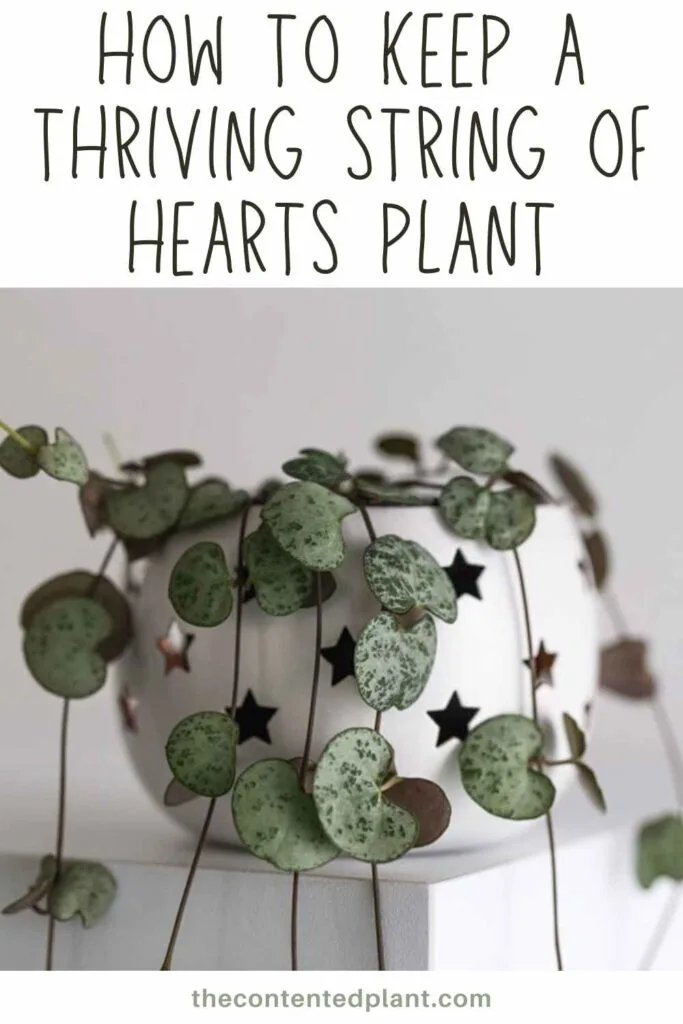
Read more about the beautiful Ceropegia Woodii
Read about the history of this plant

Haworthia Cooperi Plant Care Guide - The Contented Plant
Friday 27th of May 2022
[…] The string of hearts […]
Baby Tears Plant Care Guide - The Contented Plant
Wednesday 18th of May 2022
[…] String of Hearts […]
String of Dolphins Plant Care - The Contented Plant
Friday 13th of May 2022
[…] String of Hearts Care Guide […]
String of Hearts Watering Guide - The Contented Plant
Thursday 24th of February 2022
[…] Read our complete string of hearts care guide here. […]
String of Pearls Care Guide and Plant Profile - The Contented Plant
Tuesday 8th of February 2022
[…] the String of hearts and the String of Turtles, ‘the pearls’ is also easy to fall in love with. They are […]